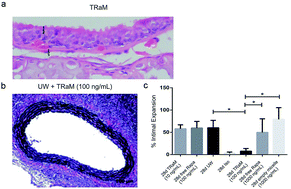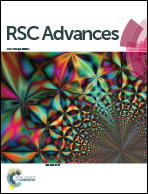Organ preservation with targeted rapamycin nanoparticles: a pre-treatment strategy preventing chronic rejection in vivo
Abstract
Hypothermic preservation is the standard of care for storing organs prior to transplantation. Endothelial and epithelial injury associated with hypothermic storage causes downstream graft injury and, as such, the choice of an ideal donor organ preservation solution remains controversial. Cold storage solutions, by design, minimize cellular necrosis and optimize cellular osmotic potential, but do little to assuage immunological cell activation or immune cell priming post transplantation. Thus, here we explore the efficacy of our previously described novel Targeted Rapamycin Micelles (TRaM) as an additive to standard-of-care University of Wisconsin preservation solution as a means to alter the immunological microenvironment post transplantation using in vivo models of tracheal and aortic allograft transplantation. In all models of transplantation, grafts pre-treated with 100 ng mL−1 of TRaM augmented preservation solution ex vivo showed a significant inhibition of chronic rejection post-transplantation, as compared to UW augmented with free rapamycin at a ten-fold higher dose. Here, for the first time, we present a novel method of organ pretreatment using a nanotherapeutic-based cellular targeted delivery system that enables donor administration of rapamycin, at a ten-fold decreased dose during cold storage. Clinically, these pretreatment strategies may positively impact post-transplant outcomes and can be readily translated to clinical scenarios.



 Please wait while we load your content...
Please wait while we load your content...